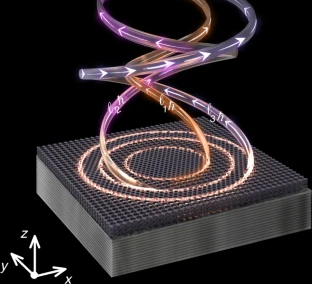UC Berkeley February 25, 2021
The quantum Hall effect involves electrons confined to a two-dimensional plane subject to a perpendicular magnetic field, but it also has a photonic analogue. Using heterostructures based on structured semiconductors on a magnetic substrate, a team of researchers in the US (UC San Diego, UC Berkeley) introduced compact and integrated coherent light sources of large orbital angular momenta based on the photonic quantum Hall effect. The photonic quantum Hall effect enables the direct and integrated generation of coherent orbital angular momenta beams of large quantum numbers from light travelling in leaky circular orbits at the interface between two topologically dissimilar photonic structures. Their work gives direct access to the infinite number of orbital angular momenta basis elements and will thus enable multiplexed quantum light sources for communication and imaging applications…read more. TECHNICAL ARTICLE

Photonic QH rings and integrated OAM of large quantum numbers. Credit: Nature Physics (2021)